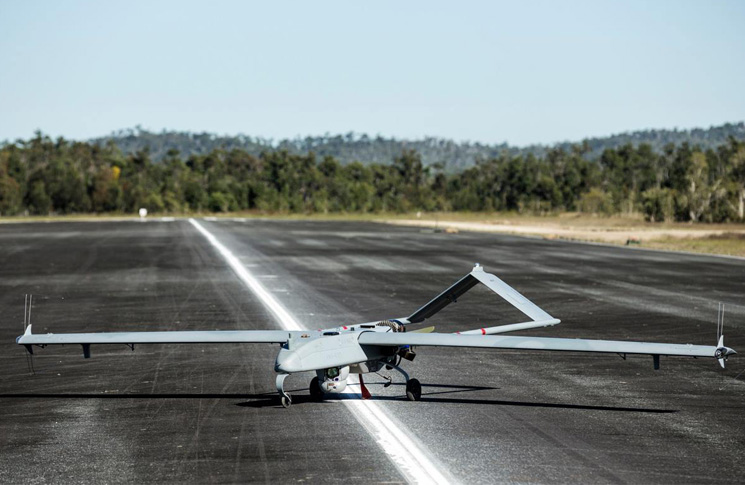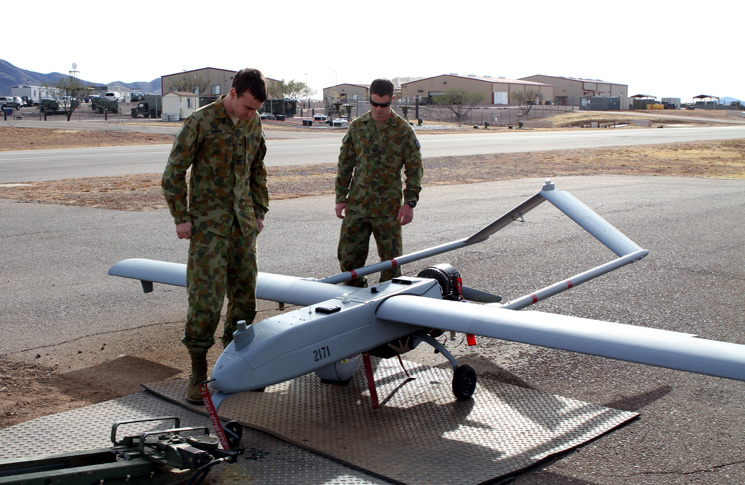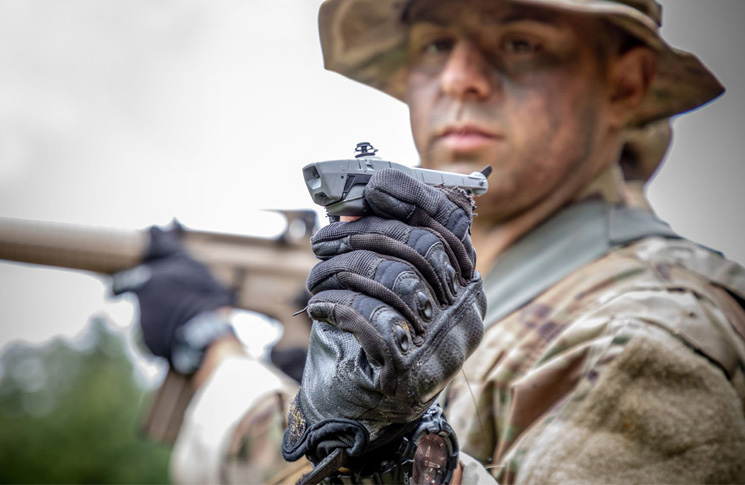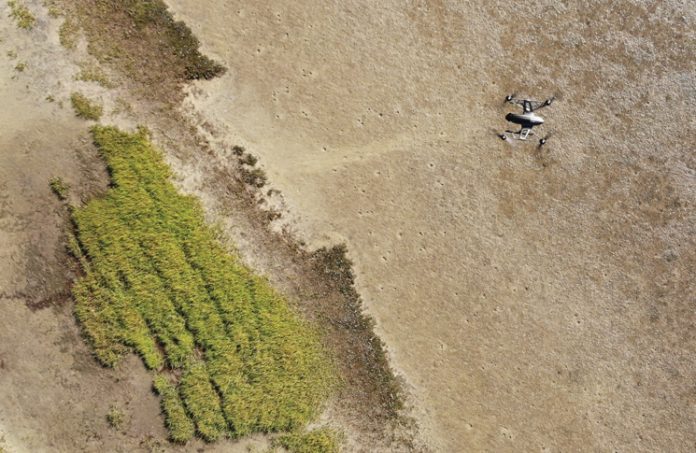Reconnaissance means different things to different sectors but the aim is the same – the reduction of risk
By Angela Stevenson
Tactical reconnaissance is primarily about reducing risk to produce good outcomes. It works like this – reconnaissance gives you knowledge, knowledge gives you better decision-making capabilities, and better decisions make for better outcomes.
For the commercial sector, reconnaissance might be about knowing your competitor’s strengths and weaknesses or identifying the potential risks of investment before implementing a strategy.
For the Australian Defence Force, reconnaissance can be about determining an optimal route or identifying hazards ahead to make better decisions. The key to success is knowing ahead of time the risks soldiers will face – prior knowledge reduces, and potentially eliminates, risk.
Traditional tactical reconnaissance in the Defence Force directly involves humans and is therefore a risky task – while it aims to reduce the risk for many, it inherently increases the risk to a few.
Australia’s modern Defence Force employs drones not only to reduce the inherent risk of the reconnaissance job itself, but to better inform decision-making and significantly increase the chance of the best possible outcome.
According to Wing Commander Keirin Joyce, Deputy Director for Remotely Piloted Aircraft Systems with the Royal Australian Air Force, all forms of Defence reconnaissance tasks are being done, or are planned to be done, using drones. Doing much of the risky work upfront are drones that weigh around 33 grams and can fit into the palm of your hand, such as the Black Hornet, or as much as 200 kg like the Shadow 200 – Joyce’s favourite.
Defence had no drones when he joined. However, after recognising the risk management benefits of using drones, the Army offered Joyce an opportunity to join the start-up crew for an unmanned aerial vehicle (UAV) regiment. Now he has seen the Army through more than a decade of drone development, only recently moving across to the Air Force, and is passionate about the improvements in safety and efficiencies that drones offer.

Drones provide better reconnaissance than troops on the ground.
Tactical reconnaissance
The Defence Force classifies tactical reconnaissance tasks as deliberate or dynamic. ‘Deliberate tasks might be undertaken from a safe, secure position where you launch a UAV to look at a very specific thing,’ Joyce says. ‘These tasks can be as simple as, say, a clearing patrol. At regular intervals you might want to look down into valleys or over the next hill at areas that you can’t see with your own eyes.’ These types of tasks were traditionally done on foot and might take hours.
‘Dynamic tasks involve organisations as small as a section or platoon or as large as a battlegroup, making a large move through, say, a battlefield,’ he says. ‘A dynamic reconnaissance task is about doing things on the move, scouting ahead of where the group is moving. And those kinds of missions, to find things ahead that are dangerous, are safer when doing it with drones.
‘For example, in an urban area where it is easy for enemy to hide, a platoon can send a soldier down into an intersection to have a look and scout it out. That’s dangerous, because it puts that solider out in the open. But they could send a drone and park it in the middle of the intersection for as long as they like, and take a really good look.’
Using a drone gives the platoon commander good intelligence without having to put soldiers into a risky situation.
‘In fact, in some ways, drones provide better reconnaissance than troops on the ground,’ Joyce says. ‘They can carry high-quality cameras, including infrared, and can stay much longer than might be safe for a soldier.’
Undertaking reconnaissance work with drones also makes the operator more confident and, ultimately, more competent. ‘They don’t have to be nervous to be that person picked to do that dangerous job,’ he says. ‘They can do more detailed reconnaissance than several soldiers on foot – doing the job better and faster’.
This increased confidence and competence is not restricted to the soldier holding the drone control panel, but filters up through the chain of command. Commanders do not need to rely on the memory and a verbal description of potential hazards provided by a soldier recently returned from a brief, incredibly stressful reconnaissance mission. Instead, they can see what the operator sees to frame their decisions.
Defence is also involved in research using drone-based technology to replicate the functions of other senses apart from sight – hearing, smell, taste and touch.
‘We have experimented with mounting chemical, biological and nuclear detecting sensing units on drones,’ Joyce says. ‘We are also working with multi- and hyper-spectral cameras, so you can “see” gases or detect soil and sand densities. You can even detect the difference between a camouflage net and a tree when you’re looking at a bush landscape.
‘There is also a very specific application in development that works on aural detection. If someone fires a gun, the drone can geolocate it, pinpointing where that gunshot came from.’
One reason Joyce loves his job is the speed with which modern drone technology changes and the innovative ways in which drones can be used. ‘The technology is maturing at such a rate that, as each new idea for how to use a drone comes along, it does not take long to find a technological solution to meet that challenge.’

If someone fires a gun, the drone can geolocate it, pinpointing where that gunshot came from.
Risky business
Defence forces have traditionally been seen as the innovators of aerospace technology. With their access to significant public funds for technological research and development and think tank-style departments dedicated to the advancement and innovative use of technologies, the civil commercial sector has always looked to the forces to provide inspiration and guidance. However, translating innovative or extreme defence technology for commercial use is not always simple.
What is simple is translating the aim of improving safety – workplace safety is paramount for both the military and civil sectors.
Matthew Vaia, founder and drone pilot at Remdrone Aerial Imagery, previously spent around five years on mine sites on the goldfields of Western Australia. He watched the various methods used to inspect and perform work at heights on industrial sites, noting the inherent risks involved to workers, and saw the improvements in safety and efficiency that drones could offer.
Working at heights in industrial settings typically involves ropes, ladders, scaffolding and elevating platforms – a very risky business. According to Safe Work Australia, 183 workers died from workplace injuries in 2019, with falls from height being the second-highest cause.
As with the Defence Force, Vaia understood that drones offered a way to mitigate the inherent risk of height-specific reconnaissance-style tasks and provide better information to those in the decision-making process, thereby optimising safety and outcomes and reducing cost.
Recently, Remdrone was tasked with locating, photographing and mapping around 200 roof-top whirly birds – cylindrical domes that spin to extract warm air from roof cavities – on 2 administration buildings at a mine site. Very little information was provided on the location, number or condition of the units. However, management was concerned that in the event of a severe storm, the aging whirly birds could dislodge or disintegrate, posing a risk to workers.
Initially, management considered hiring a rope access company to do the inspection. The company estimated it would require a minimum of 3 crew for at least a week, costing around $30,000. This traditional method also meant workflow disruptions as the buildings would need to have exclusion zones during that time.
Vaia was confident his drone could provide a complete image of both buildings, take close-up images of the 4 sides of every whirly bird located and map their precise locations, with little risk to workers or himself, in 4 days, for less than a third of the cost. ‘Completing this job by UAV consisted of onsite risk assessments each day, some signage on the ground around both landing areas and the back of a ute for swapping batteries and working on my laptop,’ he says. Simple, but safe and effective.
‘The flights were conducted over 2 weekends to limit the amount of pedestrian traffic at the buildings.’
His reconnaissance mission was a success, locating and photographing around 200 whirly birds in various states of repair. ‘One of them was found to be completely torn from the roof, confirming the client’s concerns about the possibility of a risk to those on the ground,’ he says.


Vaia says the accuracy and permanency of the data provided by the drone also improves outcomes on the work site. ‘When you take photos with a drone, you get to keep that record,’ he says. ‘So rather than having someone eyeball an issue and then know off the top of their head how to deal with it and remember the details, you have a permanent digital record’.
Vaia’s drone work not only identifies assets that may be a hazard to workers, but also detects risks to those required to deal with those hazards. Once a hazard is identified, further imagery is done to assess the structural safety of the building and the worksite to ensure that when workers go in to do the repair work, it is safe to do so.
‘The workplace may be in Kalgoorlie, but the person who is engaged to do the repair may be in Perth,’ he says. ‘The advantage that the imagery provides is a broader, better picture of the zone.’
As the saying goes, ‘forewarned is forearmed’. Therefore, both the Defence Force and the commercial sector use drones for reconnaissance to reduce the risk to their workforces.
When armed with accurate and detailed information provided by those drones, decision-makers – soldiers, commanders, worksite repairers or managers – can decide how to tackle a problem safely before heading into a dangerous situation.
Their aim is to bring troops and workers home safely – just the way we want it.


